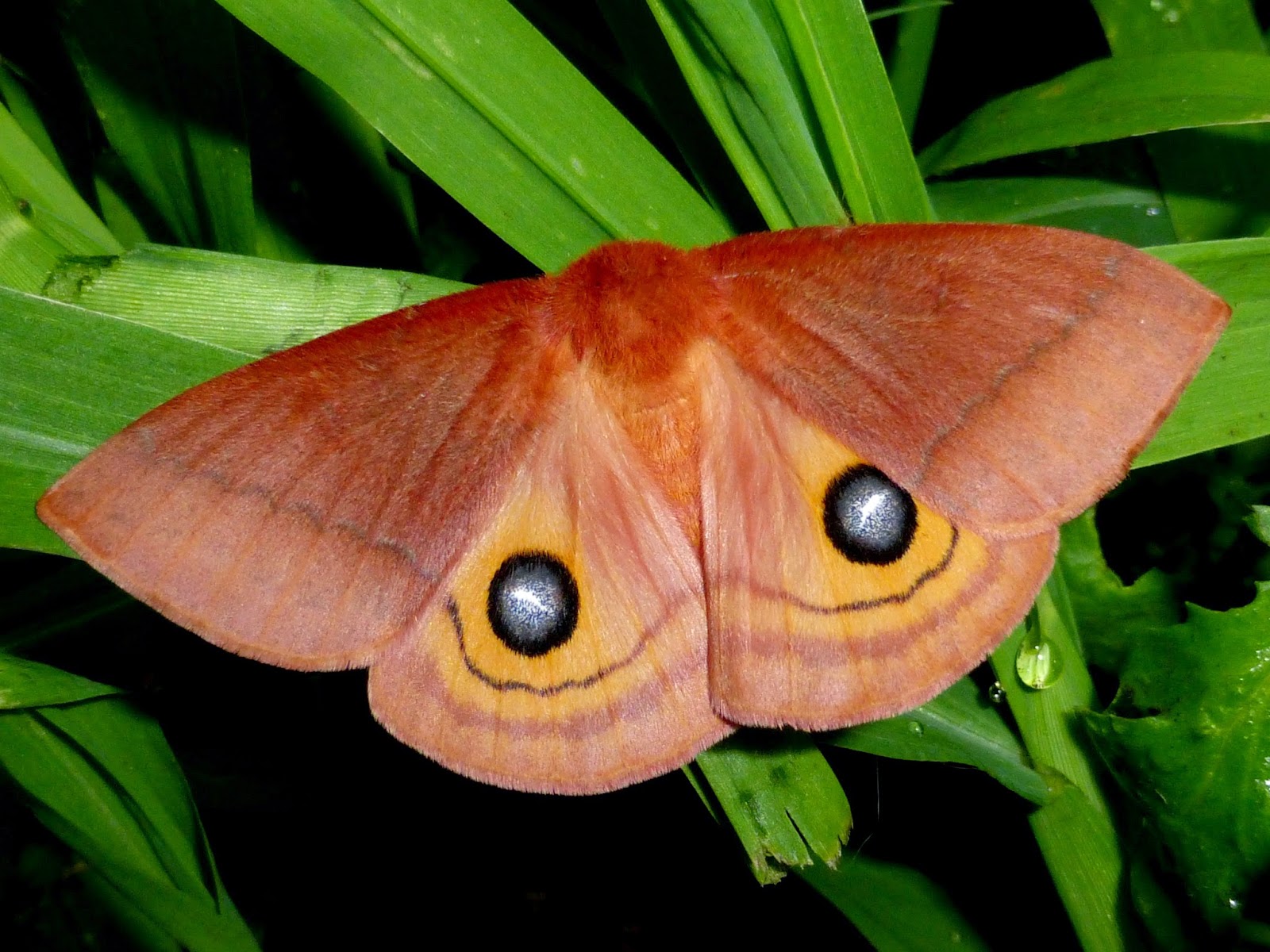
by Deep Green Resistance News Service | May 5, 2018 | Lobbying
by Center for Biological Diversity
WASHINGTON— Defenders of Wildlife, along with the Center for Biological Diversity and Patagonia Area Resource Alliance, today filed a notice of intent to sue the U.S. Fish and Wildlife Service to protect the Patagonia eyed silkmoth under the Endangered Species Act.
The rare Patagonia eyed silkmoth is clinging to survival in only three isolated locations in Arizona and Mexico. The groups previously petitioned the Fish and Wildlife Service to list the moth under the Endangered Species Act and designate critical habitat for the species.
“The Patagonia eyed silkmoth is hanging by a thread. With the only U.S. population existing in an Arizona cemetery, where its only remaining food source could be wiped out by cattle, this species clearly needs federal protection to save it from extinction,” said Lindsay Dofelmier, legal fellow at Defenders of Wildlife. “The Fish and Wildlife Service’s decision to dismiss evidence supporting listing the Patagonia eyed silkmoth was arbitrary. By failing to provide adequate explanation for the decision and not allowing for a 12-month status review, the Fish and Wildlife Service put the species at risk. Listing the silkmoth and designating critical habitat provides the best chance for recovery.”
The Patagonia eyed silkmoth exists in a single U.S. location, in an Arizona cemetery less than half an acre in size. In Sonora, Mexico, it lives on two sky islands, higher elevation areas that are ecologically different from the lowlands surrounding them.
“The Patagonia eyed silkmoth needs endangered species protection now, so we can start the work of recovering this beautiful animal,” said Brian Segee, a senior attorney at the Center for Biological Diversity. “The Endangered Species Act has saved more than 99 percent of plants and animals with its protection from extinction, and it can do the same for this rare moth.”
Cattle grazing was the primary historic cause of habitat loss for the moth and continues to play a major role in the precarious situation of the species. Mining and climate change also threaten to destroy the last vestiges of potential silkmoth habitat on both sides of the border. A catastrophic fire at critical times of the year, when the adults, eggs or larvae are out, could completely erase the moth from any of these remaining localities. Listing the silkmoth and designating critical habitat for the species offers its best chance of survival and recovery.

by DGR News Service | Mar 16, 2018 | Indigenous Autonomy, Obstruction & Occupation
March 16th 2018
For Immediate Release
Media Contact: Talon Brings Buffalo
406-404-9131
Stephens Creek Trap, Yellowstone National Park
March 16th 2018
Hours before dawn on Friday March 16th, two members of the Wild Buffalo Defense collective arrived at the gate of Yellowstone National Park’s Stephens Creek Buffalo capture facility. They blocked the gate with three 55 gallon drums filled with concrete, locking their arms inside the barrels. The three 1000 pound drums blocked access to the facility, preventing livestock trucks from taking the wild buffalo to slaughter. This action came in the wake of a similar event last week at the Stephens Creek Trap, where two buffalo protectors locked themselves to the hydraulic squeeze shoot using a metal pipe.
Wolf, the first individual locking down, described why he was taking the action: “My father is from Michaocan, Mexico, so I have both native and colonizer blood. Since I wasn’t raised in a native setting, this is my way to give back to the native community. I’m from Illinois — it’s called the Prairie State, and there’s less than one one-hundredth of the prairie left. It’s all strip malls and corn fields…I don’t like seeing just concrete and steel. Seeing how peaceful the buffalo are and how strong they are, they go through enough hardship in their lives in the forest and the plains and then with what Yellowstone National Park is doing to them they still carry on. They inspire me to keep going.”

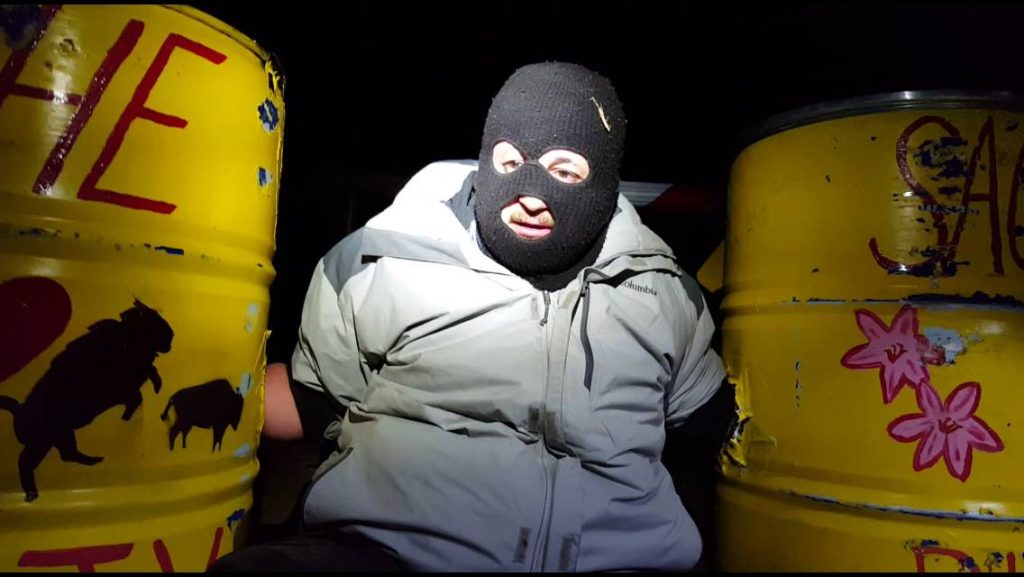
Coyote, the other individual blocking the gate, said: “I’m doing this to get a better understanding of what is really going on and to protect the buffalo and the lands that they roam. I feel like I have been lost inside…but now that I’m here I feel more combined with myself, with others, and with knowledge and understanding. Whenever I’m with the buffalo I feel like my heart runs with them. When I’m with them they already know the questions, they already know the answers, and I don’t have to respond because they already know. I think it’s a good thing for people to learn. There’s not a day in this world where you’re not able to learn something. What we’re doing is something we love to do and we only live once so we should do what we love to do and if anybody wants to come out and join and learn this experience then they should.”
The barrels were painted with two phrases, “Protect the Sacred” and “Honor the Treaties.” The words highlight the fact that Buffalo are sacred creatures to the Plains Indians. Blackfeet and Lakota prophecies say that when the wild buffalo return, the people and the earth will be healed. Yellowstone National Park currently captures and slaughters about 25% of the herd every year. If this mismanagement of the population continues, these prophecies will… [press release ends].

by DGR News Service | Mar 6, 2018 | Biodiversity & Habitat Destruction, Obstruction & Occupation
by Wild Buffalo Defense
Media Contact: Talon BringsBuffalo, 646-352-2126
An hour before sunlight on march 5th two members of the Wild Buffalo Defense collective named Cody and Crow descended from the hills onto Yellowstone National Park’s Stevens Creek buffalo trap and using a steel pipe, locked themselves to the bars of the “Silencer”, a hydraulic squeeze shoot that holds buffalo for testing, shipping and slaughter. In freezing temperatures the individuals blocked the buffalo processing facility and prevented the park from shipping wild buffalo to slaughter.
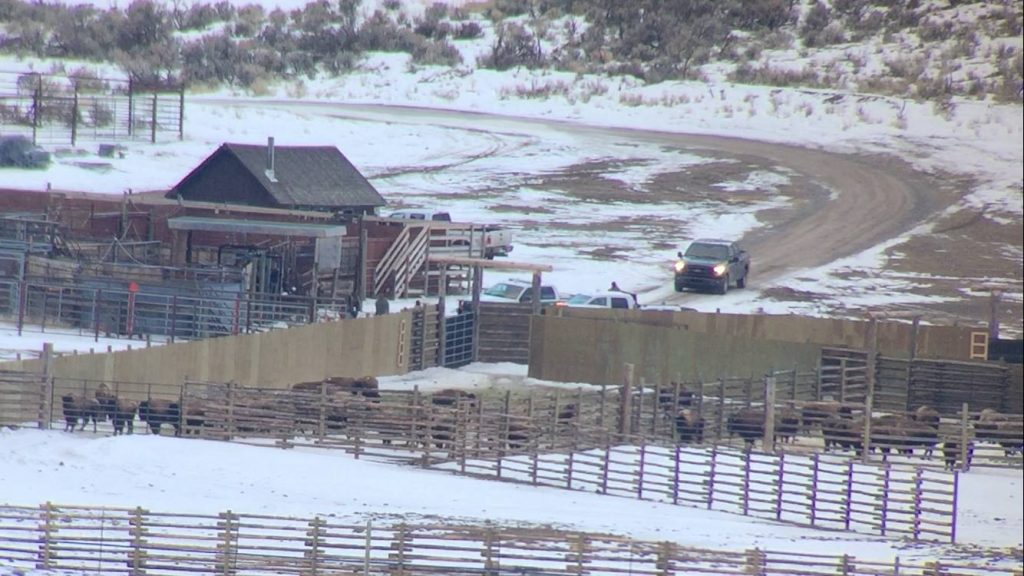 When asked why he was taking this action Cody stated, “I am standing with the plains Indians as a member of the Ojibwe tribe in Minnesota, I have a Blackfeet friend who helped me protect my territory from the line 3 pipeline and now I am here for him and the buffalo. I have a love for the people. That’s what my mom passed down to me. And I have love for the environment and animals and I feel like I have an obligation to protect them. If I have to put my body on the line to do so I will.”
When asked why he was taking this action Cody stated, “I am standing with the plains Indians as a member of the Ojibwe tribe in Minnesota, I have a Blackfeet friend who helped me protect my territory from the line 3 pipeline and now I am here for him and the buffalo. I have a love for the people. That’s what my mom passed down to me. And I have love for the environment and animals and I feel like I have an obligation to protect them. If I have to put my body on the line to do so I will.”
The two Yellowstone buffalo herds are the last free ranging, genetically pure, plains buffalo in the United States. These buffalo are decedents of the 23 that survived the buffalo extermination campaign that the US government implemented in the 1800s to starve the plains Indians into submission.
Today the Stevens Creek Buffalo Trap costs the Yellowstone Parks Service 3 million dollars per year to maintain and despite years of public opposition continues to operate their capture-for-slaughter facility within the park boundary. Activists and tribes allege that the Montana cattle lobby controls how the Parks Service manages of the wild buffalo. Crow, the other individual who locked himself to the facility stated “They say they need to kill the animals to stop the spread of Brucellosis, but the wild elk have Brucellosis and they are allowed to roam free because the cattle industry is not worried about elk competing for grass and the state receives income from the elk hunting permits.” Every year the facility captures and sends roughly 1000 animals of the 4000 wild buffalo population to slaughter.
While the two individuals locked themselves to the shoot, some activists gathered at the gate of the facility with banners reading “Wild buffalo slaughter = cultural genocide.” Their signs spoke to the connection between the culture of the plains tribes and the wild buffalo, suggesting that by exterminating the last wild buffalo, Yellowstone is effectively attempting to do the same to the culture of the plains tribes. The non-violent direct action came in the wake of a decision by the Montana department of livestock and the animal plant and health inspection service to deny the Fort Peck Indian reservation the right to receive wild buffalo from the park.
To Support Wild Buffalo Defense please contribute to our campaign and legal fund!
Campaign Fund: https://www.youcaring.com/wildbuffalodefense-1119076
Legal Fund: https://www.youcaring.com/wildbuffalodefense-1119210
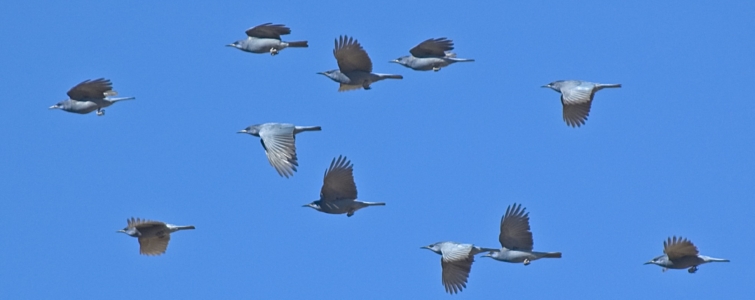
by Deep Green Resistance News Service | Feb 4, 2018 | Biodiversity & Habitat Destruction
by Heidi Hall / Deep Green Resistance Great Basin
A group of jays is quite appropriately called a party. A group of Pinyon Jays is a big party–the kind of party the neighbors would call the cops on. I used to try and count them as they flew overhead but I would usually end up laughing and losing my place while the dog ran and hid beneath something. It rarely happens now. The Pinyon Jays are not around here much anymore.
There are still some Pinyon Pines scattered around my house and the homes of my neighbors but many of them were cut down or have succumbed to drought, insects and mistletoe. In the larger area of our watershed tens of thousands of acres of Pinyon/Juniper forest have burned in wildfires. The remaining Pinyon/Juniper forests in this region have been subjected to “thinning” supposedly to reduce the fire risk or to increase Bitterbrush (Purshia tridentata) for deer browse or to “save” the Sage Grouse. I think the reasons for cutting Pinyon Pines change according to the audience and/or whatever may be a current hot topic. I was told the trees were “encroaching.” When I mentioned the concept of plant succession my contact at the Bureau of Land Management stopped responding to my emails. I also have observed that Bitterbrush has regrown from old crowns after wildfire but does not appear to be moving into the footprints of trees which were cut down.
Pinyon Jays are omnivores, sometimes eating insects and even small vertebrates, but the bulk of their diet is made up of the seeds (nuts) from the Pinyon Pine. Pinyon nuts rarely fall to the ground so the jays have to stick their beaks into the hellishly sticky cone to retrieve the seed. Humans who collect pine nuts often have a set of clothing dedicated to that specific purpose. Pinyon Jays lack the feathers other birds have around their nostrils which would be chronically globbed with pitch. I am always in awe of how these kind of things work out. Pinyon Jays also have an expandable esophagus which can hold a few dozen pine nuts until they can be regurgitated and buried. A mated pair of birds knows of one another’s stash. Uneaten seeds often become trees.
Pinyon Jays are social and monogamous. Their parties can number up to 500 individuals and most birds remain in the party they grew up in. They breed earlier in the year than any other passerine (perching bird) perhaps because the sight of green Pinyon cones will stimulate sperm and ovum development. I imagine Pinyon Jays could have some unusual pick-up lines. They nest in parties as well. There will be one nest on the the south side of each tree over a large area and yearling birds will help feed their younger brothers and sisters. As the young become flighted they will congregate in one location. The adult birds can always pick their hungry kids out of the bunch. They all look the same to me. Pinyon Jays will return to nest in the same area year after year as long as there is food available.
As long as there is food available. As long as there are Pinyon Pines.
Pinyon Jays are considered a vulnerable species. The Pinyon Jay was placed on the 2016 State of North America’s Birds’ Watch List of bird species that are “most at risk of extinction without significant action.” According to the North American Breeding Bird Survey the Pinyon Jay populations fell 85% between 1966 and 2015. The decline is due to loss of habitat. The loss of habitat is due to deliberate decimation of the Pinyon/Juniper forests along with drought and an increase in devastating wildfires. As was mentioned above the reasons for decimating Pinyon/Juniper forests are varied.
In some areas the entire forest has been ripped from the ground by dragging a huge chain between two pieces of heavy machinery. Around my region it has been hand cut and maybe one tree on a grid of about every hundred feet or so has been allowed to live. A few clusters of trees have been tolerated. Pinyon Jays, like many creatures, thrive on edges but this is nothing but edge. There is no place to put a colony of several hundred nests. And the drought means the few remaining trees rarely produce viable seed. And even if there were seeds the Pinyon Jays are gone. The remaining trees may be the last. There is no one to disperse the seed. I can walk up the hill above my house and find groves of young trees in an area that burned 40 years ago. I have crawled through acres of cheat grass in areas that have burned within the past 20 years and not found a single infant Pinyon Pine. In one nearby location a group of people from a local and a national environmental organization spent a day removing Pinyon seedlings from an area which was clear cut in the first big push several years ago. The goal is to protect the Sage Grouse from predatory Ravens who will perch in the pines. I wish I had participated. Maybe I could have saved the trees I found. No, it would not have made much of a difference except to my heart. I don’t agree with sacrificing one species for another. The Pinyon Jay is headed for extinction too.
Last week I ran outside when I heard the jays. It had been so long since I had tried to count them. It had been so long since there had been a party of jays flying over my house. You will hear them before you see them. First there is the vanguard – a few widely spaced birds. Then small groups. Then larger groups. The cawing is becoming loud. I have lost count even before the largest portion of the party flies overhead. Then smaller groups. Then a few stragglers, often making a substantial amount of noise themselves. And I always wait a moment after I think they are gone because there is always one more. And then it is quiet. This time I cried.
Notes
Pinyon Jay, Life History, All About Birds – Cornell Lab of Ornithology
Jay and Pine Intertwined | All About Birds
Editor’s note: to learn more about Pinyon-Juniper Forests and the escalating fight to save them, see Pinyon Juniper Alliance.
Heidi Hall is a musician, artist and micro-wanderer living in the shadow of the Sierra Nevada with two Golden Retrievers and a garden full of peppers, cabbages and root vegetables.
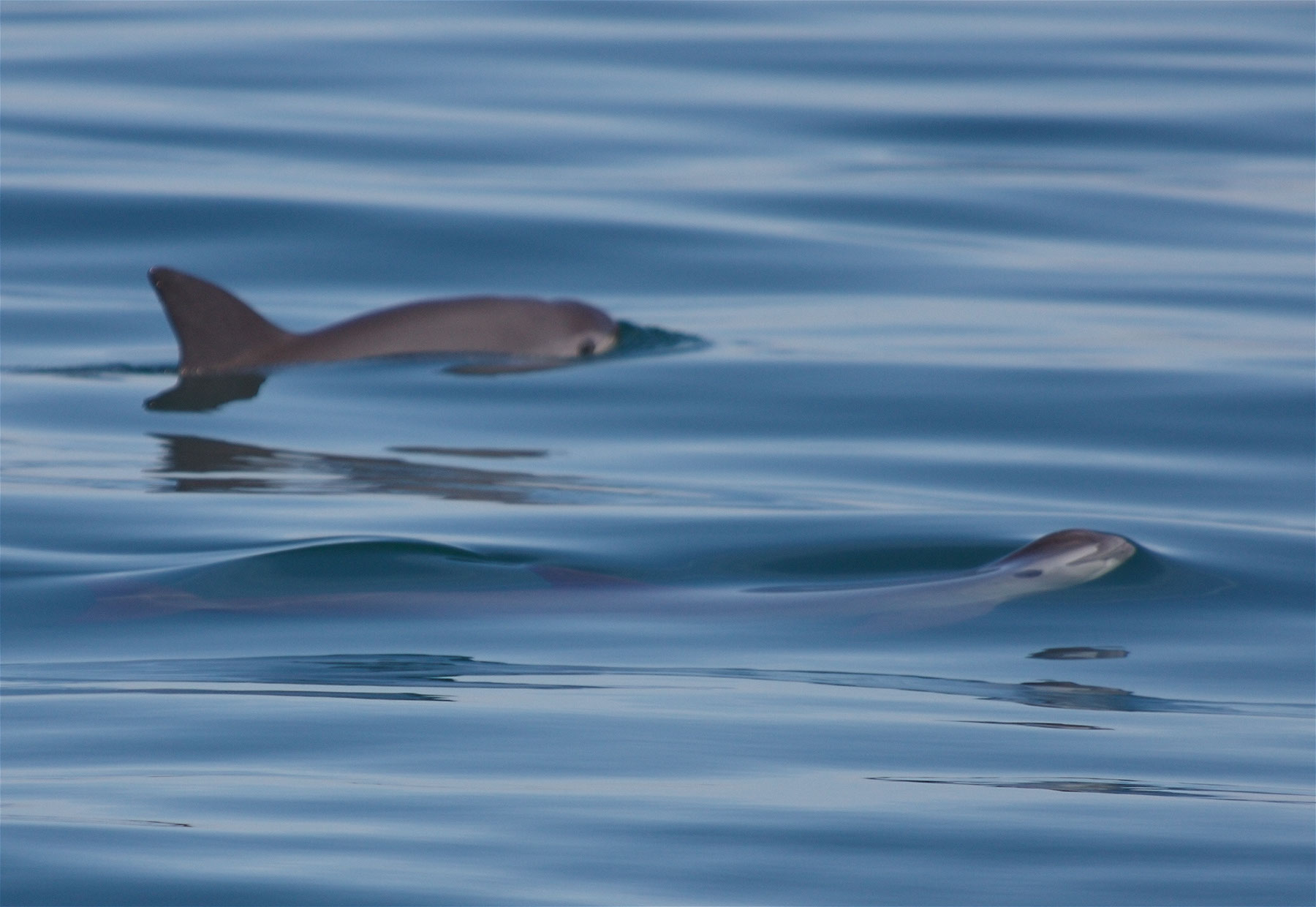
by Deep Green Resistance News Service | Dec 27, 2017 | Lobbying
Suit Seeks Ban on Mexican Seafood Imports to Prevent Extinction of Vaquita
by Center for Biological Diversity
WASHINGTON— Conservation groups filed a lawsuit against the Trump administration today for failing to respond to their emergency request to ban certain seafood imports from Mexico’s Gulf of California in order to save the critically endangered vaquita porpoise from extinction.
Fewer than 30 vaquita now remain on the planet after the population suffered a 95 percent decline over the past 20 years. Entanglement in fishing gillnets is the sole threat to the species’ survival. Scientists predict that the vaquita will be extinct by 2019 if fishing practices remain unchanged.
In May the groups filed a formal legal petition requesting that the U.S. government ban the import of seafood from Mexico that was caught in the vaquita’s habitat using deadly gillnets. Today’s lawsuit seeks an immediate response to that emergency petition. A U.S. ban on lucrative Mexican seafood imports will pressure Mexico to fully ban gillnets and strengthen much-needed enforcement.
“We’ve asked politely that the U.S. government take action to save the vaquita by banning Mexican seafood imports,” said Sarah Uhlemann, international program director at the Center for Biological Diversity. “But the clock is running out for the vaquita and it’s time to demand action. The Trump administration must use the strongest possible pressure quickly to force Mexico’s hand in protecting the vaquita before it’s too late.”
Mexico has failed to permanently ban all gillnets in the vaquita’s habitat, despite repeated recommendations by scientists and evidence that the use of gillnets by any fishery — in or adjacent to the vaquita’s range — will undeniably lead to the species’ extinction.
“We can’t leave any tool unused that will help get the vaquita’s killer — gillnets — out of their habitat,” said Zak Smith, senior attorney with the Natural Resources Defense Council’s Marine Mammal Protection Project. “The fishing industry is driving the vaquita’s extinction — and pressure on that group to fix their practices may be the most important way to save these porpoises. The United States must immediately ban the import of any seafood from Mexico that is contributing to the vaquita’s extinction.”
The U.S. Marine Mammal Protection Act requires the U.S. government to ban seafood imports from fisheries that kill marine mammals, including the vaquita, in excess of U.S. standards for marine mammal bycatch (the accidental entanglement and deaths of marine mammals in fishing gear). If American standards were applied to Mexican fishermen operating in and near the vaquita’s habitat, fishermen would be prohibited from contributing to the bycatch of any vaquita because it is gravely endangered and losing its population at a rate of nearly 40 percent each year.
“Mexico has known for decades what must be done to save the vaquita, yet has not found the political will to stop the species from plummeting toward extinction,” said Kate O’Connell, marine wildlife consultant with the Animal Welfare Institute. “If the U.S. government does not step up and use its laws to compel the Mexican government to save the species by banning certain seafood imports, it too will be complicit in the loss of the vaquita.”
In 2016, following a legal petition by conservation groups, the Service adopted new rules to enforce the Marine Mammal Protection Act’s import provision. Those rules will be fully applicable worldwide by 2022. Today’s lawsuit seeks emergency application of the rules to save the vaquita.









